"I know all about neutrinos, and my friend here knows about everything else in astrophysics." -John Bahcall
Neutrinos are the most poorly understood particles in the standard model. Remember the standard model?
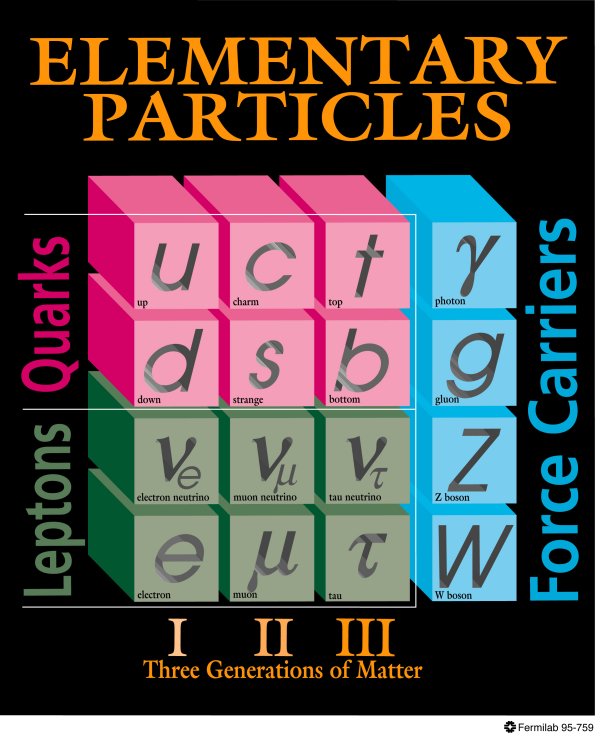
The standard model of elementary particles tells us what the fundamental constituents of matter and forces are in our Universe. We have the force carriers -- photons, gluons, W's and Z's, and the Higgs -- that are responsible for every force in the Universe except gravity. We've got the six quarks (up, down, strange, charm, bottom, and top), that are responsible for the proton, the neutron, and nearly all of the normal matter in the Universe. We've got three charged leptons: the electron being the most common, as well as its two heavier cousins, the muon and the tau. And we've got three neutral, light leptons: the neutrinos. The standard model is all of these particles and their antimatter counterparts, which have the same mass but the opposite charge.
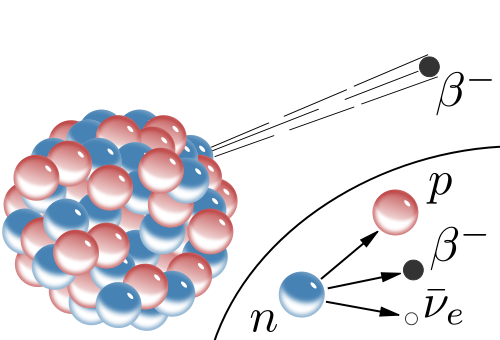
Neutrinos (and their anti-matter counterparts, antineutrinos) show up in many cases, such as whenever you have radioactive beta decay (above). The standard model tells us that, for instance, whenever we turn a neutron into a proton, we also need to spit out an electron (to conserve charge) and an antineutrino (to conserve lepton number). We can also go the other way, and turn to the Sun.
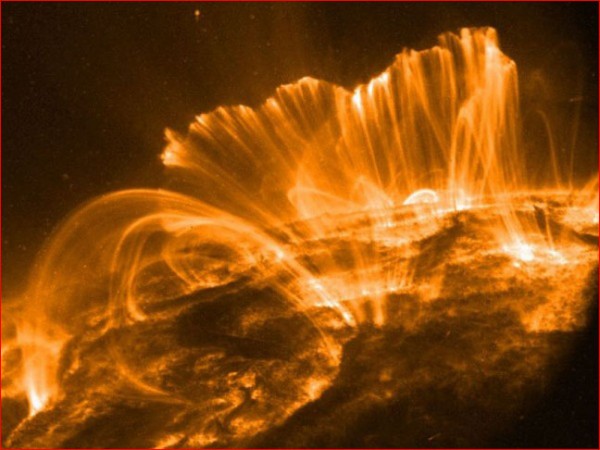
The first step of nuclear fusion in a star is to take two protons, collide them together and add energy, and produce a deuteron (a proton and neutron bound together). To do that, we've got to conserve charge, which means spitting out a positron (an antielectron), and to conserve lepton number, which means spitting out a neutrino.
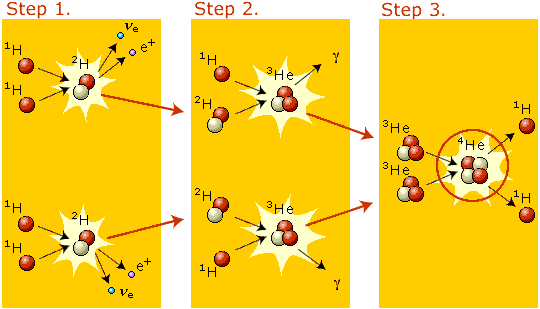
And that's what we expect the Sun to do: to spit out a bunch of neutrinos. In fact, since we can calculate how many neutrinos the Sun ought to be producing at any given time (based on the amount of energy emitted by the Sun), it was very exciting for us when we realized that we could detect them!
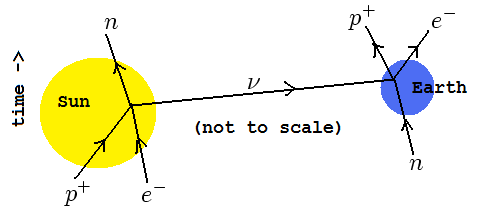
Only, there was a problem. Based on how well we're able to detect them, we knew how many we were supposed to see. And what we actually saw was only one-third of what we expected!
Now, remember our standard model. We have three different types of neutrino: the electron-neutrino, the muon-neutrino, and the tau-neutrino. The Sun only makes electron neutrinos, which is the only type we were looking for. But there's a theory that goes beyond the standard model, that says that if neutrinos have mass, they can change from one species into another!

This idea is called neutrino oscillations! And when we started examining how neutrinos from the Sun oscillate (solar neutrinos), and how neutrinos from cosmic rays (passing through the atmosphere, or atmospheric neutrinos) oscillate, we can learn what the mass difference is between these three different types of neutrino!
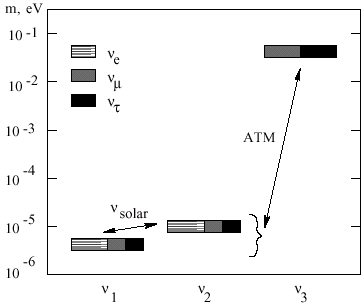
And everything seems well and good. Atmospheric neutrinos tell you one type of mixing, while solar neutrinos tell you another type. From this, we can infer some useful information about the masses of the three neutrinos, and everything is consistent.
But then this other experiment comes along, and tries to shatter our simple picture.
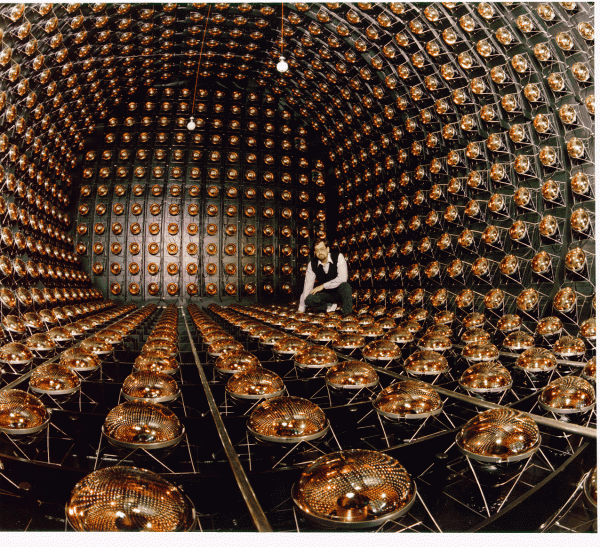
It's actually kind of old; back in the late 90's, an experiment called LSND -- Liquid Scintillator Neutrino Detector -- sought to measure neutrino oscillations from antineutrinos emitted from a radioactive source. And they did measure it! And -- for about 10 years -- everyone thought there was something wrong with their data.
Why? Because it both looks and sounds crazy. The data they got was inconsistent with there being only three neutrinos (as we see from the decay of the Z-boson), and with cosmological models of the Universe (that place tight bounds on the total mass of neutrinos).

So along came another experiment, MiniBooNE, which tried to verify or refute LSND. And when they did almost the same nuclear decay experiment -- for neutrinos instead of antineutrinos -- they found results that were consistent with the Solar and Atmospheric neutrino oscillations, and which were inconsistent with LSND. Case closed, right?

Except, just to check, they decided to re-do the experiment using antineutrinos. Now -- and this is important -- it shouldn't matter! Some of the most important conservation laws we have tell us that particles and antiparticles should have the same lifetimes and masses, and this should hold true for neutrinos and antineutrinos.
But that isn't what the data says. In fact, the antineutrino data agrees with LSND!
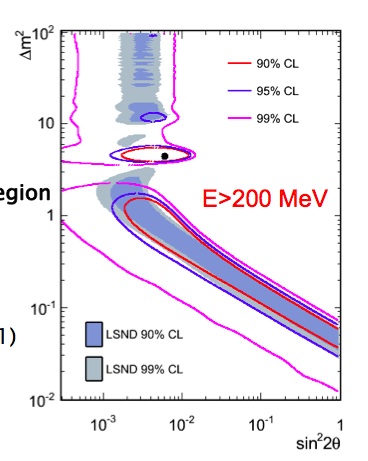
Image from Los Alamos' Richard Van de Water's talk at UPenn; slides available at http://www.hep.upenn.edu/GeneFest/Penn_symposium.pdf.
The big thing that this slide shows is that there really is this weird effect, saying that something bizarre is going on in the neutrino sector! And it's the same thing that LSND saw!
What is it?
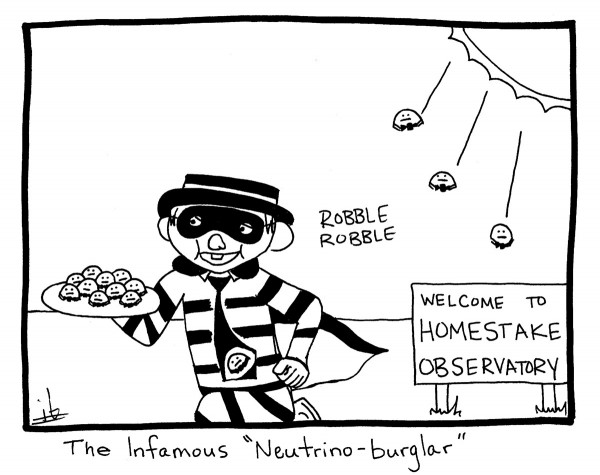
Well, there are a lot of ideas. There could be an extra, "sterile" neutrino out there, although cosmology places tight restrictions on that. There could be a fundamental difference between neutrinos and anti-neutrinos, which we don't (at present) understand at all. Or there could be some physics that's completely off the radar that explains this, but it looks like the good ol' standard model (and the simplest modifications to it) is woefully inadequate to explain what we're seeing.
This is still, of course, preliminary data, and isn't significant enough to bet the farm on. But if these results hold up over time (and accumulation of more data), this could point us in a nu new direction, telling us that this is where our current understanding of physics breaks down! Check out Mark's take on this (he was at the talk) as well as Sarah's thoughts.
At this point, I'd personally want to see better statistical significance before I believe this result, but it's definitely suggestive enough that I want to know what's behind this apparent neutrino/antineutrino asymmetry!

First, you forgot to close your strike tag after nu, so everything on the page is struck.
Is there a publicly available copy of a paper or something to read about these results?
I occasionally get into discussions like these sans the math and diagrams on my blog which is a poetry site. I can't help myself. I lived on the block where Glenn T Seaborg lived in the early fifties, played with his son, and learned of nuclear stuff at six years old... This was Berkeley, home of the now ancient Cyclotron. Glen went on to head the US Atomic Energy Commission for ten years and advised ten presidents on these matters. He had just won the Nobel when we knew him and he was fooling with the Transuranium elements at Cal Berkeley. I never left my passion for this stuff behind. I am one who thinks a major change in this stuff is coming because gravity is still hanging out there and the dark energy expansion situation rubs me wrong too. We are forced to use self consistency a little too much in the theories - these three areas point to a big change somewhere down the pike. I am getting too old, suspect I won't be here for it. Hurry up people!
The neutrinos stolen by the Neutrino Burglar bear a strong resemblance to Scrubby Bubbles. Can someone explain the physical significance of that?
Did anybody really suggest that neutrinos ought to oscillate before the number actually found turned out to be off?
Ends with a bang, too.
Fortunately, none of us would so much as suspect that you get excited about any of this.
"The idea of neutrino oscillations was put forward in 1957 by Bruno Pontecorvo"
"The first experiment to detect the effects of neutrino oscillations was Ray Davis's Homestake Experiment in the late 1960s"
From the wikipedia article on the subject.
Any chance that the missing neutrino will be the also missing dark matter?
Or if antineutrinos have more mass than neutrinos could they contribute to (hot) dark matter?
Dunc: Thank you.
I'm pretty new to this blog, and physics has always been a really weak point for me (one of the major reasons I READ this blog, heh), but I do remember reading that according to the Big Bang Theory there must have been an imbalance of Matter and Antimatter created, otherwise they would all have annihilated each other and we wouldn't have a Universe such as we know it, so, could this anti-neutrino imbalance be related to that?
Perhaps there is ALWAYS less anti-(insert particle) created in these reactions?
So this sterile neutrino would have 0 spin, not right or left handed helicities and may be a mass-less transitory state between the anti-neutrino and the neutrino, then it should be in less quantity than either the anti-neutrino or the neutrino.Perhaps we are seeing an aspect of the original creation (due to our present level of galactic evolution)where not all of the particles are created in the same unbalanced anti/normal pattern yet change from an unbalanced anti state to an unbalanced normal state,or maybe the oscillations are governed by a local aspect of gravity and can swing both ways depending on the tipping point.
I think that LSND actually used (anti)neutrinos produced by a low-energy high-current accelerator, not a radioactive source, (arXiv:nucl-ex/9605002) but yes, the MiniBoone results are surely very interesting (assuming they are real).
The first LSND data release was somewhat equivocal; in particular, the relatively few events of interest were not well distributed within the fiducial volume of the detector, and skepticism was widespread. The final LSND data release was much harder to write off in that way, and fortunately MiniBoone was approved to have a second look. If it really is true that neutrinos and antineutrinos behave fundamentally differently in what is, after all, a very simple experiment (at least conceptually), that will really be a *big* surprise.
How best to resolve this? Will more MiniBoone running suffice, or will it take either an enhanced MiniBoone or a new experiment to figure this out?
Assume the data is good; what is fundamentally different between neutrinos and antineutrinos?
Only left-handed spin neutrinos and right-handed spin antineutrinos are observed in our universe. (versus in anti-universe, i.e. antiparticles, reverse time, mirror image).
The LSND data hints at why matter and antimatter bifurcate into two temporally inverse and spatially orthogonal subuniverses.
RH-antineutrinos and LH-neutrinos interact gravitationally more strongly with matter. LH antineutrinos and RH-neutrinos interact more strongly with anti-matter.
Hi, I haven't worked on these experiments, but I am a neutrino physicist. Firstly, I agree - let's get some significance on those results before we go all Cold Fusion on them. However, if true it's
*really* wierd. One of the basic tenets in Quantum Mechanics is that the mass of particles and anti-particles are identical (due to some basic symmetries in the universe - CPT for those in the know). This oscillation phenomenon is a mass-based effect. Throw that away (as this result may imply you need to) and we have to rethink quite a bit of theory. It's very hard to shoehorn a single sterile neutrino into the theory that describes the LSND data AND all the other neutrino data that has been gathered over the years. In fact it's hard to fit 2 steriles into the theory. 3, anyone?
At the moment we just need more data, data, data.
JesseS : good catch. There is an imbalance in the laws of physics between matter and anti-matter - it's called "CP violation" which is code for "imbalance between matter and anti-matter". We can measure it, but we don't understand why it is there. THere is another theory called "Leptogenesis" which suggests that CP violation in the neutrinos generates this imbalance in basic matter.....if there is something odd going on in anti-neutrinos as shown by LSND then there might be indirect evidence for this idea. We're starting experiments to test this now, including the one I work on : T2K in Japan.
ANeutrinoGuy, that both answers my question and gives me new terms to read up on, thank you!
Personally I've never bought neutrino physics, too little evidence for too exotic claims, I agree there is *something* there but I think it is way too early to make definite claims as to what it really is.
Sorry Ax - what exotic claims are you referring to? Oscillation, for example, is a basic quantum mechanical effect that is also seen in quarks. It's not specific to neutrinos - and there's a hell of a lot of data on it. What else?
Well, it would fit nicely with there being three families of quarks - why not add a sterile neutrino (sterino?) to each one?
ANeutrinoGuy: If there is "a hell of a lot of data on it" then please point me to an experiment which produces all three types of neutrinos and then detects all three types providing detailed counting of each type as a function of distance from the source and has a large statistics.
This is what I would call a conclusive proof of neutrino oscillations - if they are indeed present in the data.
"This is what I would call a conclusive proof of neutrino oscillations - if they are indeed present in the data."
Ax - "Proof" is only applicable to math and alcohol. ;-)